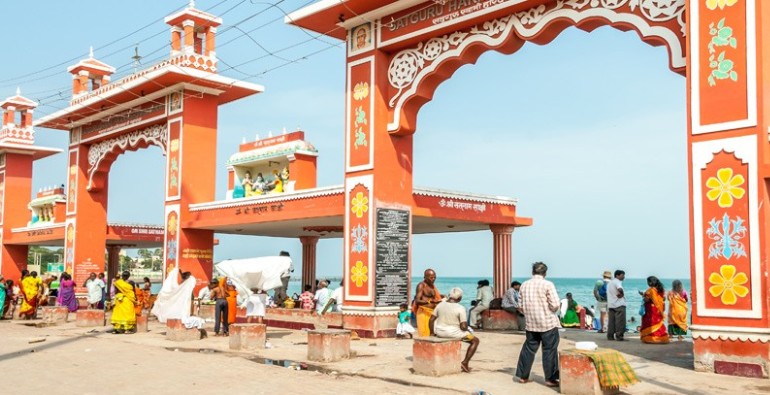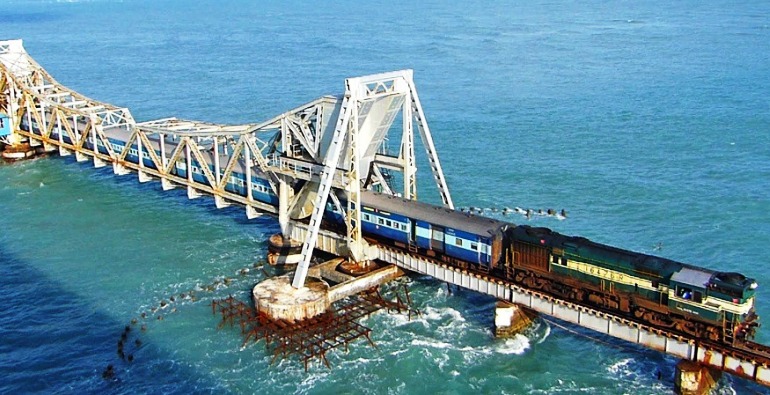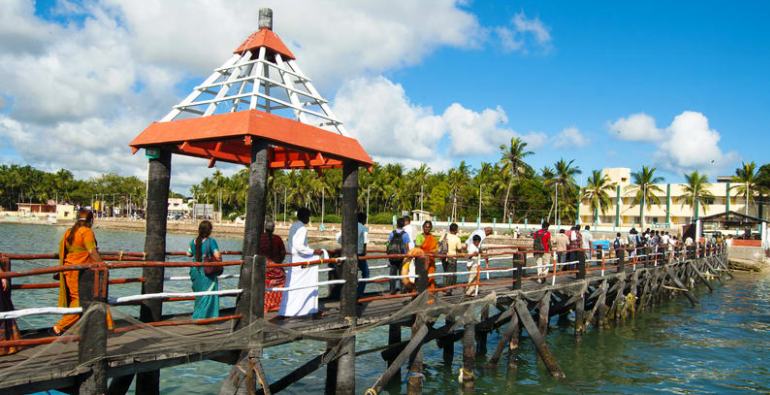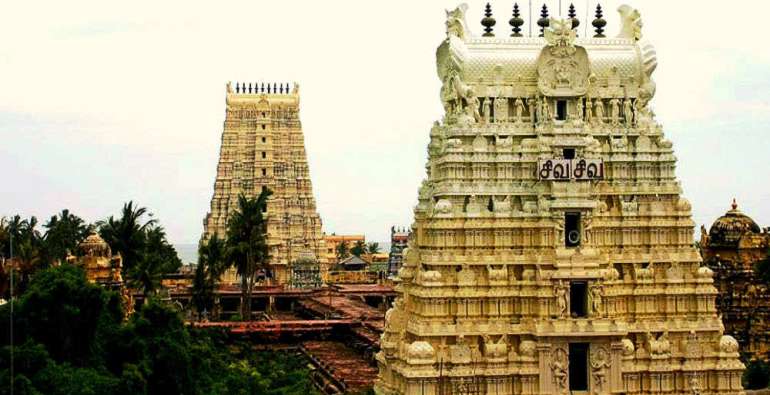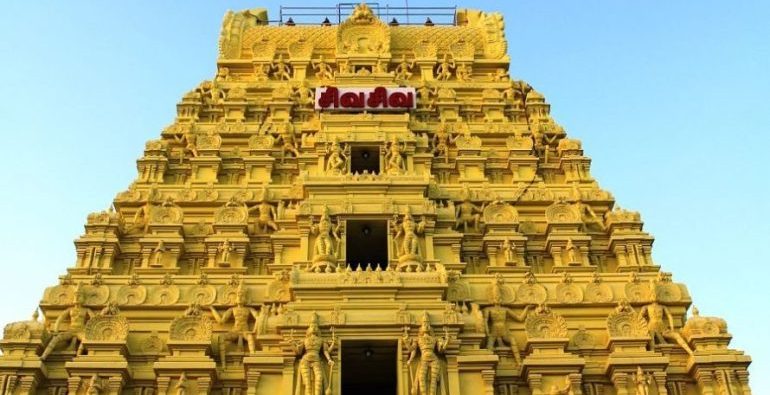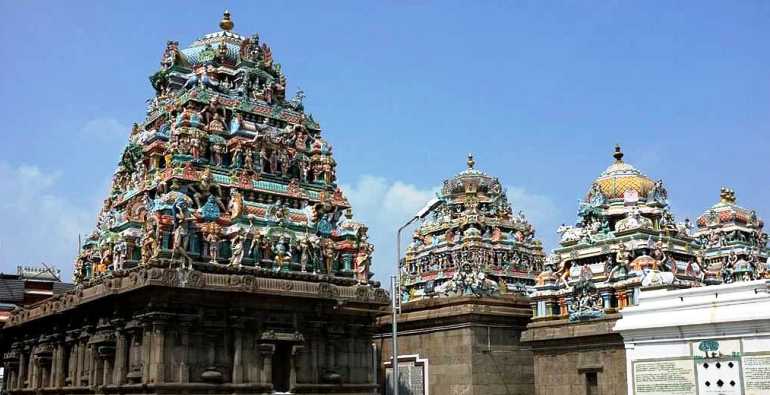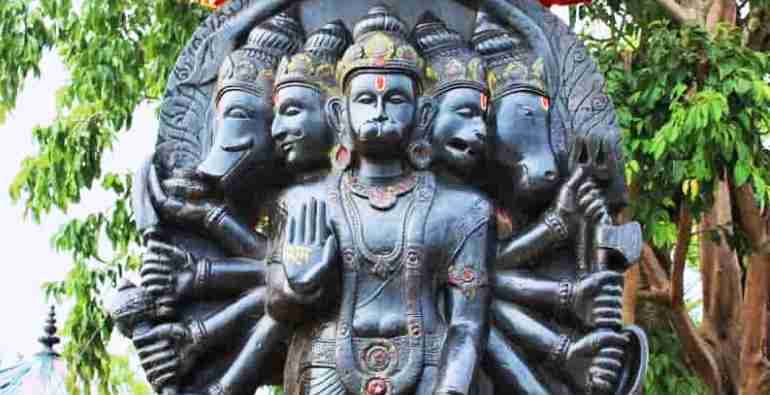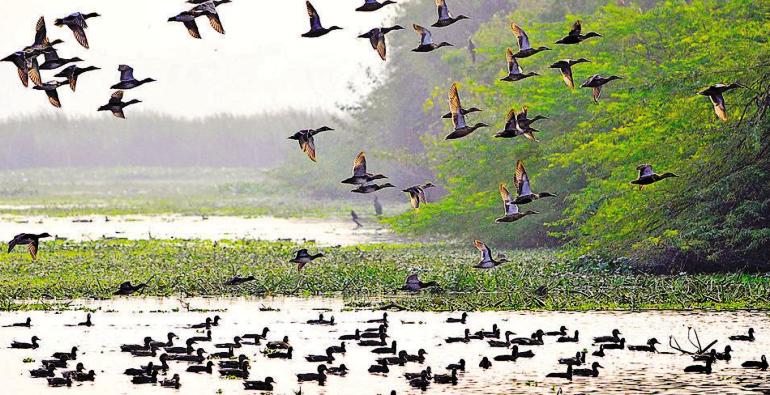Rameswar / Rameswaram / Sriramalingeshwar Jyotirling / Rameswaram) is a famous pilgrim center for Hindus. This is one of the four dhams of Hindus. It is located in Ramnathapuram district of Tamil Nadu state. The island located in the Gulf of Mannar is a famous temple of God Ram. The temple of Shri Rameshwar ji is one thousand feet tall, six hundred and fifty feet wide and one hundred and twenty-five feet high. In this temple, a high statue of a higher Shiva ji is also established in the temple. In addition, there are many beautiful and beautiful Shiva statues in the temple. Nandi is also a huge and very attractive idol. There are also statues of Lord Shiva and Parvati, whose decoration is celebrated on the annual festival. On this occasion, the ride of Shiva and Parvati rides by sitting on gold and silver vehicles. On the annual festival, Rameswaram Jyotirlinga is embellished with silver tripund and white perfume to decorate, which gives a beautiful appearance of Linga. The special significance of taking part in Gangajal from Gangotri of Uttarakhand to Shri Rameswaram Jyotirlinga has been explained. If the Ganges water is not available near the pilgrim who travels to Shri Rameshwar, then the paddes of the people there give dakshina (like perfume bottle) to the Ganges water.
History of Rameswaram
It is said that at this place, Shri Ramchandraji had worshiped Shiva before Lanka's campaign and established his idol. In fact, this place is a confluence of the cultures of North and South India. The name of Rameswaram in the Puranas is Gandhamardan. Mannar Island is approximately 11 miles from north to south and about seven miles wide from east to west. On the east coast of the settlement, the temple of Rameswaram is about 900 feet long and 600 feet wide. It has four quarters of height, which is 22 feet high. There are three sides on one side and two towards the east. Gopur of the West is seven khana and is about a hundred feet high. The other goop is in a semi-constructed state and is no higher than the wall. The main temple of Rameswaram is 120 feet high. Within three entrances, one of Shiva's famous Dwashash Jyotirlinga is located here. On the idol Sheshnag is showing shadows with its foam. The grandeur of the temple of Rameswaram is due to the verandas of his thousand pillars. It is 4000 feet long. By seeing the continuous rows of these pillars, to the uninterrupted distance of approximately 690 ft, the gorgeous and unique sight of the eyes, which is knowledgeable, is unforgettable. According to Fergusson's scholar of Indian architecture, the art of Rameswaram-temple includes the best beauty of Dravidian style and its flaws. They say that the temple of Tanjore is not even more beautiful than the Rameswaram temple, and it is not even tithe with its magnificent vision, but it is more impressive than seeing it in full view. Lakshman Tirtha, Ramatirtha, Ramjharoka near Rameswaram (where the footprint of Sriram is worshiped), Sugriva etc. is a remarkable place. Mangalatirtha on four miles from Rameswaram and near it is the Beluni Tirtha. Just a short distance from Rameswaram is the Jata Tirtha called Kundavati, according to Kandvati, Ramchandra had cleared his hair after the war in Lanka. Rameswaram is probably mentioned in the name of 'Ramaparvat' in 'Mahabharata'.


